A few years ago I interviewed Francois Mitjavile, the brilliant winemaker/philosopher who owns Tertre Roteboeuf in St. Emilion, for the Underground Wine Journal (sadly no longer in print). I think what he says is still highly relevant. I might be tempted to sit down with Francois and have a follow-up chat this summer to see how he thinks ten years on, but for now I’ll just post here what I wrote back around 2001. If you’d like the original published version in nice PDF with pictures, email me.
Test it or Taste it?
Which is more important – or more useful – to the winemaker; tradition or technology? This has been a burning issue for years, as succeeding generations have taken over the momentum of the wine world.
Here in Bordeaux winemaking has been strongly influenced for a very long time by the so-called “School of Bordeaux”. This is an assemblage of the principle researchers in Bordeaux’s University and colleges, several prominent consultants and the some of the more outgoing winemakers who serve as spokesmen for Bordeaux’s “establishment”. There are a few “radicals” who have chosen to follow their own paths; whether for individualistic reasons, marketing strategy or to protest a system that they find too constricting.
These voices also make the headlines. However there are less effusive but equally important consultants who guide the vast bulk of the region’s winemakers in the traditional but evolving methods of the “Bordeaux School”, and those winemakers themselves, who quietly go about their daily business of just making wine.
I asked some of the best winemakers in Bordeaux about the way they approach just one of the many decisions in the vineyard – the simple but all-important question of when to pick the grapes. As you might expect, the answers were not so simple, but I did find that regardless of how much they rely on laboratories and analysis, all the winemakers I spoke to place primary importance in this key decision on their senses – notably sight and taste. I decided to focus on one man– Francois Mitjavile of Chateau Tertre Roteboeuf in St. Emilion.
I first met Mitjavile about eight years ago, about the time he was “discovered”. Apart from
his superb wines, I was struck by his intensity and passion. His whole philosophy of wine seemed to revolve around passion. From the tender care of the vines through the “raising” of the wine as it ages in the cellar, to the purchase of the bottle and finally to the enjoyment of the aged wine, Francois sees every stage as an emotional experience with the wine as the focal point of the romance of the moment. On the other hand, he is a practical man. His quixotic nature doesn’t blind him to the realties of farming and the many
snares that nature can throw into the farmer’s life. He uses the tools available – herbicides and pesticides included – but in a careful way that has minimum impact on the eco-system of his vineyard.
This summer I was curious to see how his approach had evolved over the years, as he and his wines had become famous and firmly established amongst the “top” St. Emilions. Francois seems on the surface to eschew the establishment; he cares little about being classified in the hierarchy of his appellation’s wines, he keeps to himself, avoiding publicity.
He uses only his original consultant, a single cooper to make his barrels, a
single broker for his wines and even a single banker, all of whom have been with him pretty much since the beginning. A very simple winemaker, but this simplicity shrouds an amazingly deep understanding of his craft, and a passion that grows ever deeper after 25 years of working this small estate of 15 acres.
The subject of this story immediately led me to think of Mitjavile. Shortly after I first met François I spent a day with him during the bottling of the 1992 Roc des Cambes, the estate in the Cote de Bourg region that Mitjavile has owned since 1988.
Francois talked about the timing of the bottling; he had kept the 1992 in barrel a full 20 months when conventional wisdom dictated it should have been bottled after 14-16 months – his palate told him it just wasn’t ready yet. From the taste of the 92 Roc when I tasted it in 1999 and 2000 his judgment was right on; this is one of the best integrated wines I can remember tasting – light in nature following the year’s weather, but elegant and complex, and perfectly balanced.
This philosophy is fundamental to Mitjavile’s winemaking. He says that great wine is produced by a combination of the terroir, the vinification and the emotion of the winemaker. He does use science in his winemaking as a tool, as does any intelligent winemaker. However he is adamant that ‘feelings’ are the key to producing a wine which is faithful to its origins; the winemaker should not use science to alter the fundamental
character, but only to avoid problems. More than once Francois has gone against
the advice of analysis and his oenologist to produce wines that truly reflect
the terroir and the weather of the particular vintage.
On a rather rainy day this June, Francois was ready to talk.
As soon as we sat down in his living room, filled with photographs and books
ranging from philosophy to rock-and-roll, classical music to art, geography and
politics, his natural enthusiasm burst forth in a declaration of his winemaking
philosophy. “… I’m really understanding now, the way I feel … the know-how which seems to be the most suitable to express the most interesting and romantic wine possible …”
Interestingly enough, Francois says that this evolution started for him in 1992, the time I first got to know him:
“… in this period new wines were entering the international market – not especially Bordeaux – black, purple ferocious wines, which are “said” to have the race (breeding) to grow old…
“At this time I called my oenologist Jean-Francois Chaine for a consultation… we just discussed about the past, without tasting anything. I said to him, I see these wines appearing on the market, and I’m afraid that I’m losing the feeling of the beauty, of the beautiful taste, and I would like you to help me to find my way.”
This was when Francois started to re-evaluate his own winemaking, and concluded that he wanted to produce a classic Bordeaux wine with modern know-how, rather than a “modern” wine made by technique alone.
Important to him also is the recognition of “regionality”. What is appropriate
to Mitjavile in St. Emilion may not be appropriate to a winemaker in California, South Africa, Chile or Australia, or for that matter Pomerol or the Médoc. He points out the risks of harvesting in Bordeaux, where the Gulf Stream and Atlantic storms can bring rapidly changing conditions around September, with wet, warm, humid conditions:
“You can get rotten (grapes), you can harvest crude and not
ripe, you can harvest diluted, you can harvest decadent, and the decision on
when to harvest is very difficult depending on the way you work, on how you
feel, the flavor of the fruit… to express the best of the flavor (each year) in
view of the type of wine we produce in this region – macerated wine…”
He also sees the use of our current knowledge base as an
important tool which his predecessors did not have available. “(In the past)
many people were obliged to harvest crude and rude wines, and we knew that in time, the bouquet will hide a little bit the rudeness of the wine… of the tannins and acidity… We always knew that the greatest years were those when nature allowed us to grow up the wines without accidents, but they were very rare. We had mistaken ourselves – a sincere mistake, in the effort to harvest wines that were safer to grow up (the acidity being a natural antiseptic). We educated journalists, wholesalers, all the profession, saying that ferocious tannins and high acidity are the sign of the race (breeding) which enables the wines to grow old and to be marvelous later. This was a pure fallacy, of which we convinced ourselves at first, and unfortunately then educated a whole generation, and we dealt to this international tendency of rustic, grotesque, noisy wines… which are disappointing to me and which in
fact don’t grow old.”
I asked Francois whether this indictment applied in general or to particular vintages, and he agreed that he was really talking about certain years… “Obviously sometimes the weather is so beautiful that everyone is surprised and says the wine is good young, is good old, is good always… and these anyway are always the greatest years. I would say I’m talking more about particular millesimes.”
He goes on to moderate his critique by reassuring me that
the current generation – what he refers to as the fifth generation of the
School of Bordeaux – is back on track. He says that this present school has
refined the understanding, looking for “authentic” wines that express the
flavor of the fruit and the type of year, at the same time being “civilized”
wines that he says are “extremely refined and worked through the fruit – but
not changed – and have to be extremely emotional in the aromatic richness, but
not impressive in the stress of the power… this doesn’t mean diluted… but it
doesn’t hit you on the head. It means expressive.”
Then Mitjavile starts talking about the technical problems…
“If you harvest at the good time the first thing to say is
that the tannins have to play the game of the structure by the flavor of
the structure, not by the bony, aggression of the structure. This is, for all
human pleasure, the balance… the bassist in an orchestra is profound, not hard…
if you take good hard rock it’s round… a classic coffee, tea or cigar or barrel
is powerful but not hard. All the purpose of the structure is the balance, to
enable the harmony to be sustained – by the flavor, but not by the hardness of
the structure. In a great wine you have to have the aromatic harmony: not by
the acidity, not by the rudeness of the tannins, but by the dynamic of the
fresh red fruit which is married with the licorice-cacao fruits.”
This brings Mitjavile to the real crux of his philosophy on
ripeness and harvesting. He likens the grape to a perfectly ripe prune or
cherry, grown in a perfect soil, “which enables the fruit to be gorgeous, you
could say” that moment when the fruit gets to the cacao, licorice flavors and
before it loses it’s fresh fruity dynamic flavors. So I ask him how he decides
when this perfect moment has arrived, which even for a great winemaker is not
an easy question to answer…
He starts out with the problem vintage: “In a bad soil, or a
bad year, if the fruit is not ripe, you can extract hard, green tannins which
are sustained by very rich primeur flavors. So a taster who doesn’t
know, he tastes the wine and thinks this wine is beautiful because the aromatic
intensity of primeur flavors hides the greenness. Some years after, when
this flavors have folded, he’s saying this wine is closed because just the structure
of the tannins appear. And ten years after, when the tannins get colored by the
ageing flavors he says the wine gets open – but really it will never be a great
wine. (With these conditions) you should not make a wine of this style – you
could make a beautiful wine of, say a Beaujolais style, but not a wine of this
(Bordeaux) style.”
He thinks of other problems: “Otherwise, we can get rain, and the rain comes to the roots, and the fruit gets flabby, meaty, with common animal sensuality. The tannins are not hard, but the fruit has lost the beauty of the aromatic freshness.”
Watch video of Francois during fermentation
And the good years: “And now you have soils and years –
let’s say in 1990, in almost every soil – or almost every year in the great
terroirs – where the maturing process is so slow that the fruit can get to the
opulence, to the licorice, to the rotie flavors, to the great flavors,
meanwhile the plant goes on making photosynthesis with fresh red fruity
flavors, and now you don’t say with moralistic, simple reasonment the fruit is
overripe or under ripe, you say just that the fruit is in beautiful richness of
ripeness flavors. It’s opulent like cacao, and at the same time it’s not tired
and flabby, because the purity of the soil has sustained the long vegetative
cycle with fresh red fruity flavors.”
So how do you decide when that moment has arrived, I ask again…
“You play with different flavors, which are the flavors of
the year, which are never as I just said! So, there plays the
agriculture know-how of the local evolution of the maturity in your soil.” Now
as Francois gets to the height of his passion we have to interpret a little –
he is referring to the intimacy of the farmer with his terroir, and his point
relates to his relationship with his oenologist – the farmer who works his soil
year after year with the same crop develops an intimacy that cannot be replaced
by technology or advisors, and this is really the keystone of his thinking.
“I will give you very different years, to understand it.
1992: rainy, cloudy all the year.” He says that he had no problem of heavy,
meaty flavors at Tertre Rotebouef, as his terroir protects the vines against
this: “It’s not the disadvantage of this soil – this soil has other
disadvantages, the perfect terroir does not exist.” In ’92, he says the danger
was rustic tannins. “I’m not presumptuous enough to say I will control the type
of the wine, but I don’t want discord notes (of rustic tannins). Then, you know
that it will not be animal; it cannot be burned, it cannot be green; no teak,
tobacco flavors because of the lack of sun. But there is another way to play
with the fruit: you can wait the senile evolution of the skin (as it
starts to decompose) and then you come to decadent, very refined type of
flavors which are of straw, dead leaf, humus, tea flavors which makes all the
refinement of the ’92, with a certain type of fruit. So, you don’t say I harvest over-mature this year, NO! There are years I harvest very fresh. I just harvest “the 1992”. I know the evolution of the fruit in this sun, I saw the climate and suddenly there was only one possible reasonment to express the best original potential of the flavors of the fruit
that year.
“The vegetative cycle was very long, the plant making photosynthesis very late, because always humid and cloudy. So then how do you decide? You say, we have to harvest when you feel by the taste scrunching the pip under your teeth and scrunching the skin under your teeth; you see the fruit, you see at one moment the plant has finished the game. And then there was one other moment that decided in 1992. It was because in this type of year
there is an important part of rotten (grapes); you have to make a very strong
selection. You can say that that almost the decision comes to an economical
decision; you are ready to lose the harvest in a few days, and this when the
fruit is – OOP! – in the stage!”
And how many days was the 1992 harvest, I asked:
“Oh it was terrible! Because in these years I was not very
efficient in all this understanding, you know. We do triage with the
harvesters, but it was the first years we tried to understood… it was so much
difficult to understand that some of the most beautiful ripe fruit they were
among the rotten! We were building our know-how and we worked slowly, and it
was raining, and it was humid, and it was warm, and it get more and more
rotten, and we are harvesting more and more slowly… and we engaged ourselves in
a neurotic, dramatic story where harvest took almost three weeks, with all the
harvesters very tired. It was very, very disappointing. Now I know how to go
very, very quickly with a big team, but at this time I did not know and we lost
a big part of the harvest.”
Just two years later in his 1994 harvest, Francois picked Tertre Rotebouef in two sessions of two days, between rain showers, with a team of 40 pickers, ferrying the same team over to Roc des Cambes between sessions.
“Before 92 we had the 90’s years, when all was easy. Before the 90’s when a year was “little” you could say we were producing tender little years (at Tertre Rotebouef). Now the people who buy wines they want always rich flavorful expression of the character of the year, so the game comes much more difficult.”
I asked if that was the kind of wine he likes to make, or would he like to see those tender years instead?
“In old times we could produce in little years, diluted
vintages. Now the consumer is so much refined, pays very expensive the bottle,
and he wants the know-how of the wine producer to express from the fruit a
refined, intense expression of the character of the year – but not the same
character each year of course. And the game comes much more difficult. In 1990
I was wondering, we are very lucky, but if comes a difficult year, how will we
be able to give satisfaction to the modern consumer who wants really beautiful
emotions? And the first test came in 1991 and 1992.”
We move on to another example of Bordeaux’s varying climate,
and as Francois gets into high gear I just let him talk…
“Let’s talk about 1998. Dry year, dry in August – you could
say spicy. Everything was quite perfect. In 8 days (the harvest) would have
been perfect. And suddenly rain and rain and rain. Now, if you understand the
fruit and the soil where you are, the game is completely different. You say, in
this year I have to preserve the fresh, red, black, alive, beautiful elegance
of this type of fruit. Completely different from the decadent, charming flavor
of ’92. But, I don’t want discord notes – no aggressive tannins… and I have
rain… But, I know that on a ripe fruit of this type the rain makes a very,
very, very quick evolution of the fruit – the fruit is very quickly spoiled. So
to preserve the character of the year and in the same time of the profoundness
of the tannins, which have not to be rude, you will wait two days rain,
and then you will harvest – extremely quickly!
“That was a very big lesson, because in 1998 I was in Roc de
Cambes, and I thought that I had lost it, as I saw it was going so quick, so
quick, so quick, on the ripened fruit, and I said to my wife “I have lost, I
have not understood, I am stupid!”. And I suddenly looked at my wife, and she
reacted – extremely beautifully; she understood, you know. She borrowed from
friends all the equipment, she built a new second team, and the next morning
the two properties were worked together, and in 2 days it was harvested, and we
produced a beautiful ’98, and I was saved by the will of my wife because at the
moment I was only understanding the mistake, I was disappointed, I was not
really reacting… you know?”
François moves on to his last harvest: “1999, another type
of year… beautiful, generous year, completely different from 1998. But ’99 was
more rainy, more warm, tropical type of weather – more cloud, less sun, more
hot. Generous, luxuriant, exploding vegetation, green
and alive. If winemakers had a fault in this year it was mainly the lack
of expression – sometimes tender, sometimes just not expressive, because of,
very simply, too high yields. So in 1999 you had to help the natural evolution
of the plant – you did not have this dryness in August to ripen the fruit – at
the moment of ripeness you had a lot of rain. So the game was very simple – to
harvest very quickly, as there was a risk of rot – but to bleed strongly. The
1999 character is an opulent fruit, if you have taken off the rain by simply
bleeding some juice off (in the vat).
“1997, another type of year. Flowering took four weeks, so
at the harvest you had some grapes which were ripe the earliest in 100 years,
and on the same bunch, you had late-harvest fruit. So then nature gave us a dry
autumn, so you knew that with a dry autumn the most early fruits would evolve
to resiny flavors, but still with refined flavors, and meanwhile you could wait
the last fruit to be ripe, to avoid the discord of rude tannins. And then you
have turned the handicap of the year into character of the year. You
have cacao, green, resiny flavors, you have desiccated fruit, you have
over matured fruit, and you have lastly the ripening, rich, fresh fruit.
“So, what I could answer to your question of a few minutes
ago, to decide the date of the harvest? … But first I must say that you
should not have a dogmatic law of elegance; to have this or that type of
year – that’s why I’m always disturbed when people say that I harvest overripe,
or whatever. No, you see that in four different years I harvest completely
differently, trying to adapt to the best expression of the flavor of the fruit,
with one discord note that has to be avoided – no rude tannins.”
François says there are five elements he looks for to decide
the perfect moment:
“Firstly when you see the leaf slightly turning color from green to autumn colors. Secondly, the color and structure of the skin – it has to be less black, less violet, less purple. A great wine is not black. At perfect ripeness you are after the highest point of
intensity of color. The fruit is starting to decompose, more brown, and able to
grow old much more longer. Suddenly the skin bleeds more easily it’s color.
Then you look at the pinceau of the grape (the pulpy part of the stem as
it enters the grape) which has to be blood-red, not green. It’s very very
important – maybe the most precise gauge of the maturity. The pit has to
turn to old wood, not green wood – to brown wood, and lastly the fruit has to
fall easily (off the vine). And the stem of the grape must be brown also. An if
you scratch the skin into your teeth it has to go to no green flavors right
into the heart of the skin. If you scrunch the pip it has to come to coffee
flavors. And the fruity flavor has to be at their highest moment. The fruit
should be so well matured that it is slightly degrading, being fresh in the
same time.”
It seems to me that we’ve covered rather more than five points, but I’m not about to argue! I ask Francois if he thinks that you can determine that stage of the grape from analysis:
“No. No, there is no… well yes, but it’s “grossier”, very general analysis. The
“extractability of tannin”. To understand this very slight degradation they
press (the grape) in the machines, and if the tannins go out very easily they
say that it’s ripe. But it’s an analysis which is very rough, very general. At this moment, either to decide the date of harvest, or to decide when to get the wine off barrel, there is no rational help by analysis or specific criteria.”
This brought me back to the summer of 1994 and the bottling
of the ’92 Roc des Cambes; one of the first real lessons I had learned on the
true art of the winemaker, who can feel what to do with his wine.
Francois puts this point into even more poignant perspective as he goes on to
say that whatever he has learned is only valid for his own vineyards. “Put me
in Pomerol and I would make some terrible mistakes, but I have adapted to the
local reality – the winemaker has agricultural know-how adapted to a terroir
and a variety of grape.” Which is really, I think, the answer.

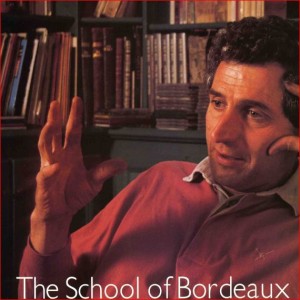

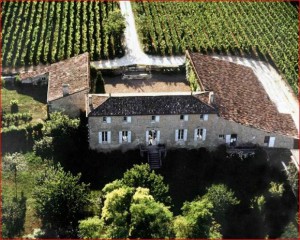

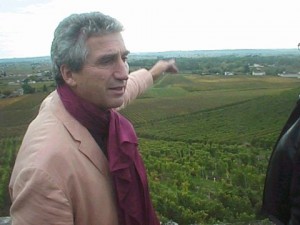
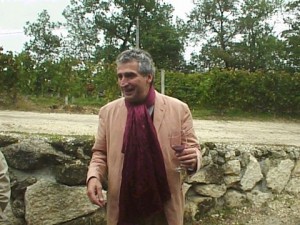

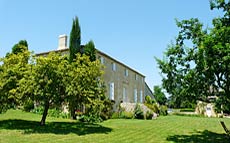
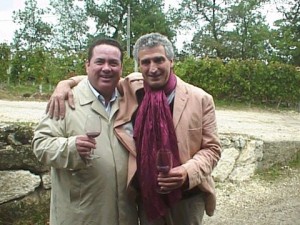
Pingback: Old Wine | Avalon Wine Blog